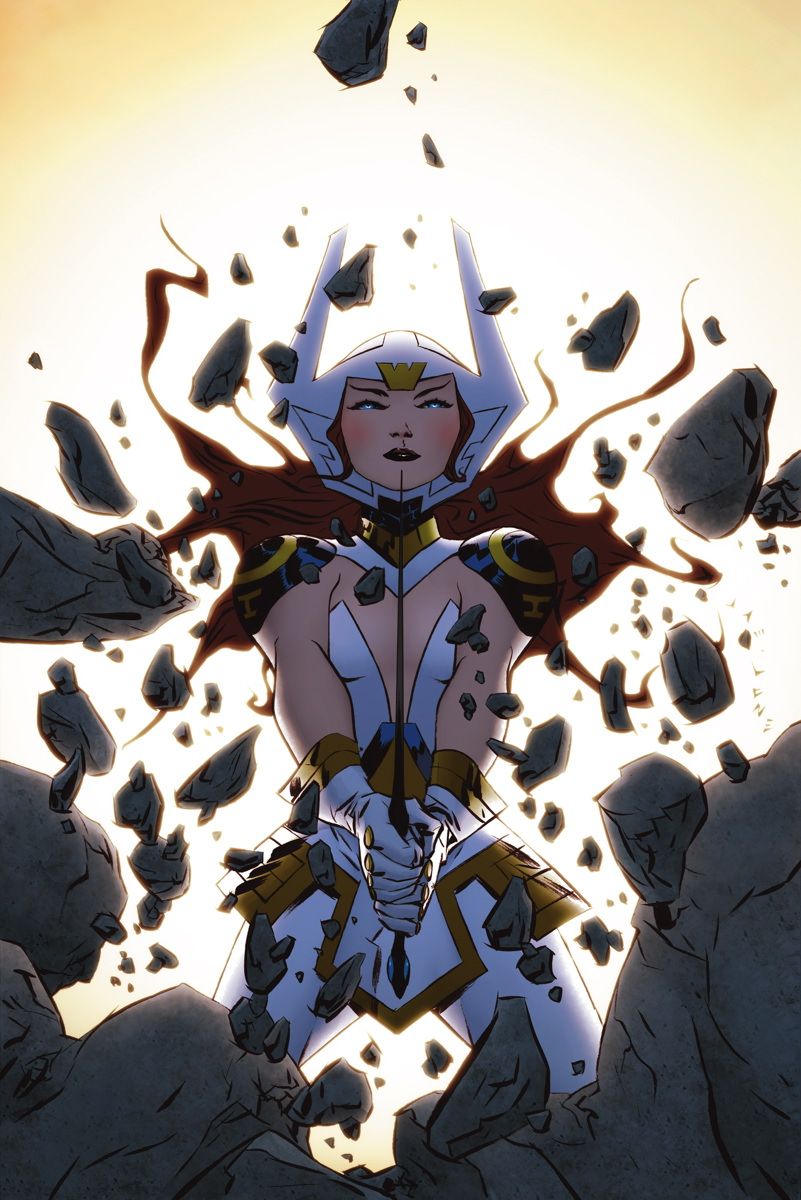J.M. DeMatteis, Bruce Timm and Rick Leonardi's "Justice League: Gods and Monsters - Wonder Woman" #1 expands on the history of this parallel world version of Bekka, who was originally created by Jack Kirby as one of the New Gods and was recently introduced into a new continuity by the recent "Justice League: Gods and Monsters" direct-to-video movie. "The Dream" is a chronicle of Bekka's introduction to Planet Earth and her role among humans.
Timm and DeMatteis tie Bekka's journey and her ideals to the era of JFK and MLK. The story opens with a classic visitor from space introduction. Bekka's fight with a dinosaur-like monster looks cool, but it has no connection to the rest of the story. Leonardi obviously enjoyed penciling this scene, but the mechanisms of the monster's arrival and the reason for its retreat are left vague.
The plotting and narration feel forced. Bekka crash-lands in India but spends the rest of the story in America. India has no role in the plot except to give her time on earth a more global scope, but this is only tokenism, since India has no role to play but providing nameless Good Samaritans. There's a disconnect between the space opera action of the opening scene and the science fiction/1960s politics medley of the rest of the story.
DeMatteis relies too heavily on first-person narration in captions to move through the settings and the action. There's a lot of redundancy in the words and pictures with phrases like "awaken in an unfamiliar place" and "the woman comes closer" that are best left for the artist to communicate. The dialogue is cliched, and the portrayal of all the characters other than Bekka is paper-thin, relying on stereotypes of 1960s archetypes. Bekka remains a static character, largely unchanged throughout the political and personal tumult. DeMatteis and Timm retcon Bekka into American history with melodramatic scenes with Kennedy and the Civil Rights Movement, but these scenes fail to add much dimension to Bekka. The villain of the story is derived from mad scientists stretching all the way back to "Frankenstein" and "The Island of Dr. Moreau," but he lacks the dramatic force or horror of the originals.
Most of the action "The Dream" occurs on a 1960s hippie commune, and the climax of the plot ties into Project MKUltra. These details add verisimilitude to the 1960s setting, but treatment of both the division of labor within communes and the CIA's covert operations are superficial. It's difficult to take the historical milieu seriously when the plot twists are all cliched or nonsensical. The takeaway point seems to be that changing the world involves a more active engagement with the powers that be. Bekka's choice in the last scene is simplistic. She concludes that separatism doesn't work based on her experience in the commune. It's hardly a rigorous decision, but it does the job of creating a point of closure.
The deux ex machina of Bekka's gem, "created by the Mother Box -- infused with my own hopes and highest dreams" is a contrived way to resolve the zombie invasion. The curing method of Bekka's "heart connection" is part ludicrous sentiment and part mumbo-jumbo that doesn't follow any previously established rules of power. The statue of Ganesha is an apt symbol to trigger Bekka's travels, but the Mother Box itself is a farfetched, all-too-convenient plot device.
Leonardi's art has smooth transitions, but it's not explained how Bekka's costume comes and goes in different scenes, and it looks out of place in most of the scenes after India. In the scenes with Bekka's crystals, Leonardi's patterns and Allen Passalaqua's colors are very pretty and add a kaleidoscopic, psychedelic 1960s vibe. Dan Green wisely doesn't add any dark inks to these panels.
"Justice League: Gods and Monsters - Wonder Woman" #1 squanders the promise of its concept with sloppy plot devices and superficial characterization. I expected more from DeMatteis and Timm.

